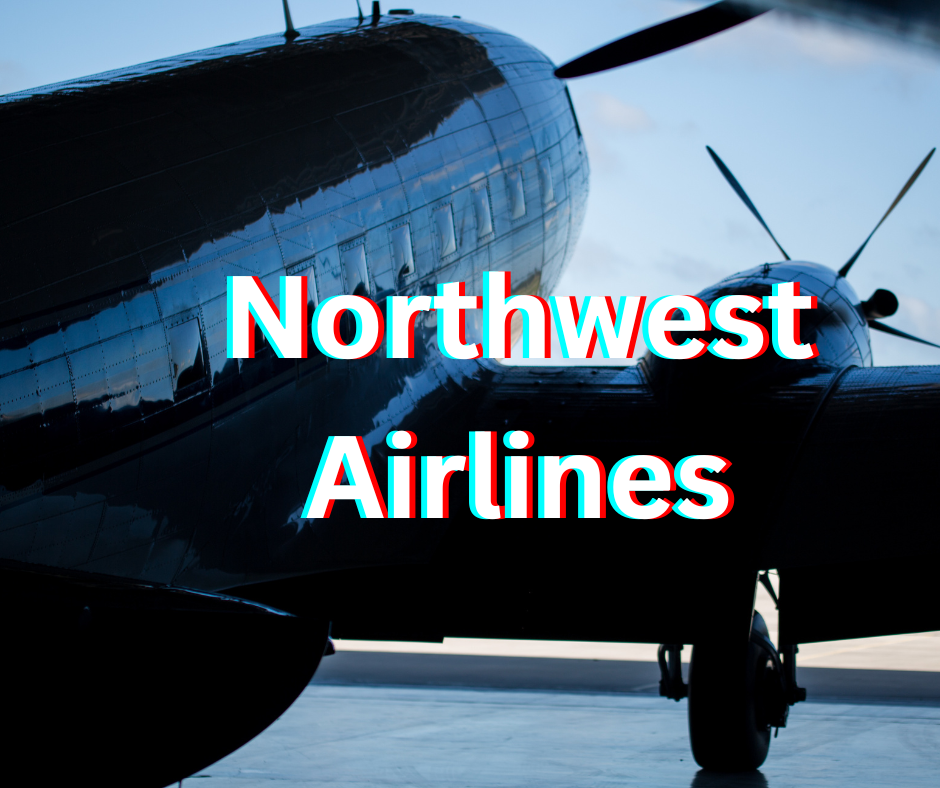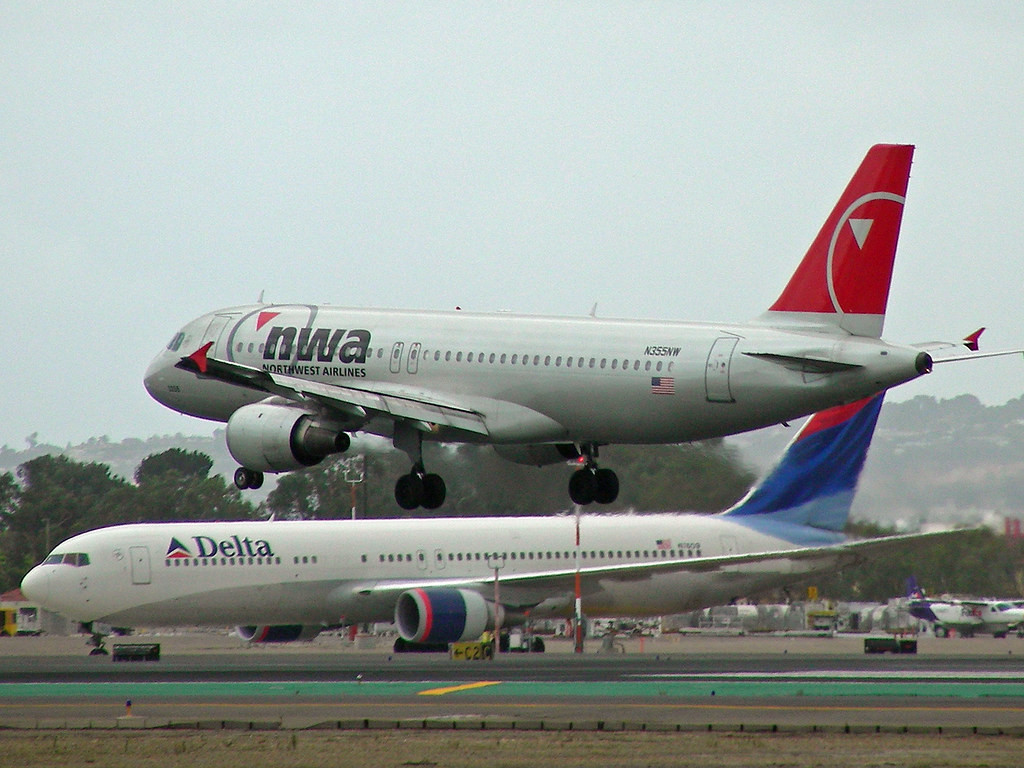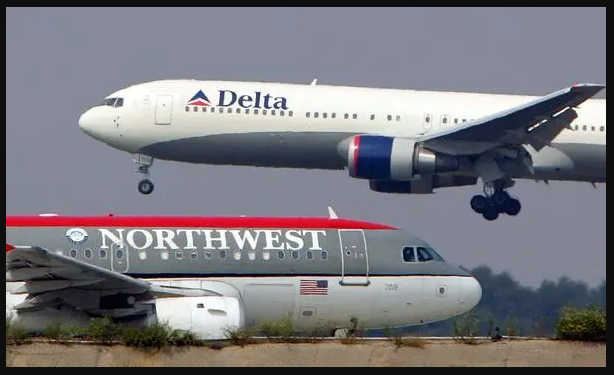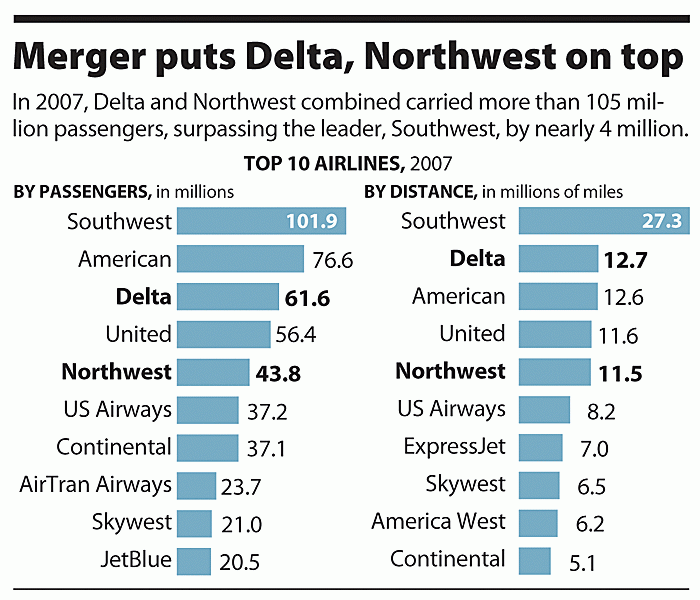Note: This not airlines official number. It may connect you with travel agency.
Posted on May 10, 2023 by Admin

Northwest Airlines holds a significant place in the annals of aviation history. From its establishment in 1926 until its merger with Delta Air Lines in 2008, Northwest Airlines captivated the skies and left an indelible mark on the industry. This article delves into the captivating story of Northwest Airlines, chronicling its early days, major accomplishments, and the factors that led to its eventual merger. So, fasten your seatbelts, and let's embark on a journey through time and aviation excellence.
From its inception, Northwest Airlines set its sights high, aiming to become a major player in the airline industry. The vision of Colonel Lewis Brittin, an aviation enthusiast, led to the establishment of Northwest Airways on September 1, 1926, in Minnesota. With just a small fleet of open-cockpit biplanes, the airline embarked on its first commercial flights, connecting the remote towns of Minnesota.
Northwest Airlines quickly expanded its operations, connecting more cities and pioneering new routes. In 1927, the airline extended its services to North Dakota, paving the way for its expansion into the Pacific Northwest. By introducing the Boeing 247, a revolutionary all-metal aircraft, in 1933, Northwest Airlines solidified its reputation as an innovative and forward-thinking carrier.
With the end of World War II came a new era for Northwest Airlines. The airline seized the opportunity to expand its services to Asia, becoming the first U.S. carrier to fly across the Pacific Ocean. In 1947, Northwest Airlines launched its inaugural flight to Tokyo, Japan, establishing itself as a pioneer in transpacific air travel.
Northwest Airlines continued to push boundaries and achieve notable firsts in the industry. In 1954, the airline became the first carrier to fly the polar route from the United States to Asia, reducing travel time and opening new possibilities for global connectivity. Furthermore, Northwest Airlines was among the first airlines to introduce a computerized reservation system, streamlining the booking process for passengers.
In 1986, Northwest Airlines acquired Republic Airlines, further expanding its domestic and international network. This strategic move allowed Northwest Airlines to strengthen its presence in key markets and establish hubs in major cities such as Minneapolis, Detroit, and Tokyo. These hubs became essential transit points for travelers around the world, facilitating seamless connections and enhancing the airline's global reach.
Northwest Airlines traces its origins back to 1926 when it was founded as Northwest Airways. Based in Minnesota, the airline began as a mail carrier, shuttling mail and packages across the region. Over time, the airline expanded its operations to include passenger services, connecting communities and fostering economic growth. The daring spirit of the airline's founders propelled Northwest Airways into new heights, quite literally.
By the 1930s, Northwest Airways had established itself as a reliable and pioneering carrier. The company expanded its route network, offering flights to destinations throughout the Midwest and beyond. With innovative aircraft and a commitment to customer service, Northwest Airways gained a reputation for excellence.
The post-war era brought both challenges and opportunities for Northwest Airlines. As the aviation industry boomed, the airline played a crucial role in supporting the country's military efforts. Northwest Airlines operated charter flights and transported troops and supplies during the Korean War and Vietnam War.
As the 1950s rolled in, Northwest Airlines entered the golden age of aviation. Jet-powered aircraft revolutionized air travel, allowing for faster, smoother flights. Northwest Airlines embraced this new era and introduced jetliners to its fleet. Passengers marveled at the speed and comfort of these cutting-edge planes, ushering in a new era of air travel.
The 1970s and 1980s witnessed a period of significant expansion and innovation for Northwest Airlines. The company introduced wide-body aircraft, such as the iconic Boeing 747, allowing for increased capacity and long-haul flights. This development marked Northwest Airlines' entry into the global arena, connecting passengers to destinations across the world.
Furthermore, Northwest Airlines became one of the first airlines to introduce a computerized reservation system, making the booking process more efficient and convenient for passengers. The company also implemented various customer service enhancements, cementing its reputation as a forward-thinking airline.
The turn of the millennium brought new challenges for Northwest Airlines. Economic fluctuations, rising fuel costs, and increased competition strained the airline's profitability. In an effort to adapt to the changing landscape, Northwest Airlines implemented cost-cutting measures and explored strategic alliances.
Despite these efforts, the airline faced financial difficulties, ultimately leading to a Chapter 11 bankruptcy filing in 2005. However, Northwest Airlines persevered, undergoing a restructuring process to emerge stronger and more resilient.
In 2008, Northwest Airlines embarked on a historic journey by merging with Delta Air Lines, another titan in the industry. The merger created the world's largest airline at the time, solidifying Delta's position as a global powerhouse.
The merger between Northwest Airlines and Delta Air Lines marked the end of an era for Northwest Airlines. The distinctive red tail that had adorned Northwest's aircraft disappeared from the skies, replaced by Delta's iconic logo. Nevertheless, the transition was not without its share of challenges and adjustments.

Northwest Airlines, throughout its extensive history, served a wide range of destinations, both domestic and international. From bustling cities to exotic locales, the airline connected passengers to various corners of the globe. Let's explore some of the notable destinations that were part of Northwest Airlines' extensive route network.
As a Minnesota-based airline, Northwest Airlines established its main hubs in Minneapolis and Detroit. These cities served as gateways to the Midwest, offering convenient connections to numerous destinations within the region. Passengers flying with Northwest Airlines could explore the vibrant city life of Minneapolis or discover the rich automotive heritage of Detroit.
Northwest Airlines also catered to travelers seeking coastal adventures. Seattle, with its iconic Space Needle and thriving tech scene, was a popular destination served by the airline. Additionally, Northwest Airlines connected passengers to Anchorage, Alaska, opening up opportunities to explore the stunning natural beauty of the Last Frontier.
With its expansion into the global market, Northwest Airlines ventured across the Atlantic, connecting passengers to European destinations. London and Amsterdam were among the key cities served by the airline. Travelers could embark on a journey to the historic streets of London or indulge in the vibrant culture of Amsterdam, all made possible by Northwest Airlines.
Northwest Airlines' route network extended to the Far East, allowing passengers to experience the allure of Asian destinations. Tokyo and Shanghai were prominent cities in Northwest Airlines' itinerary. Travelers could immerse themselves in the traditional beauty of Tokyo or explore the dynamic metropolis of Shanghai, thanks to the airline's connectivity.
For those seeking sun-drenched beaches and tropical getaways, Northwest Airlines had them covered as well. The airline offered flights to popular vacation destinations such as Honolulu, Hawaii, and Cancun, Mexico. Passengers could bask in the warm embrace of paradise, enjoying the pristine beaches and crystal-clear waters that these destinations had to offer.
Northwest Airlines catered to the wanderlust of cultural enthusiasts as well. The airline's routes included captivating cities like Paris and Rome. Passengers could marvel at the iconic landmarks of Paris, such as the Eiffel Tower and Louvre Museum, or explore the ancient ruins and rich history of Rome.
Northwest Airlines also ventured into the diverse continent of Africa, connecting passengers to fascinating destinations such as Johannesburg, South Africa, and Nairobi, Kenya. Travelers could embark on thrilling safaris, experience vibrant cultures, and witness breathtaking landscapes in these remarkable African cities.
South America was not left out of Northwest Airlines' expansive route network. The airline offered flights to captivating cities like Buenos Aires, Argentina, and Rio de Janeiro, Brazil. Passengers could indulge in the tango rhythms of Buenos Aires or immerse themselves in the vibrant carnival spirit of Rio de Janeiro.
Exploring the diverse tapestry of Asia was made easier by Northwest Airlines. The airline connected travelers to bustling cities like Seoul, South Korea, and Bangkok, Thailand. Passengers could savor the tantalizing flavors of Korean cuisine or immerse themselves in the vibrant street life of Bangkok.
Northwest Airlines also catered to the domestic market, connecting travelers to major cities within the United States. New York and Los Angeles were among the prominent destinations served by Northwest Airlines. Passengers could experience the bright lights and iconic landmarks of New York City or soak up the sun on the beaches of Los Angeles. These domestic routes provided convenient connections for both business and leisure travelers within the United States.
From the bustling metropolises to the tranquil beachfronts, Northwest Airlines' destinations offered a diverse range of experiences for travelers. Whether it was exploring cultural landmarks, indulging in culinary delights, or immersing oneself in natural wonders, Northwest Airlines connected passengers to a world of possibilities.

The merger between Delta Air Lines and Northwest Airlines, which took place in 2008, was a monumental event in the aviation industry. The decision to combine two major carriers was driven by various factors and strategic considerations. Let's explore the reasons behind the merger and delve into the motivations that led to this transformative event.
One of the primary reasons behind the merger was the pursuit of synergies and cost savings. By combining operations, Delta Air Lines and Northwest Airlines aimed to streamline their processes, eliminate redundancies, and reduce overall expenses. This included merging administrative functions, rationalizing route networks, and optimizing fleet utilization. The consolidation of resources and the elimination of duplicate systems and facilities allowed for improved efficiency and cost-effectiveness.
The aviation industry is highly competitive, and mergers can provide opportunities for airlines to strengthen their market positions. By joining forces, Delta Air Lines and Northwest Airlines sought to increase their market share and enhance their competitive advantage. The merger allowed the combined entity to operate a more extensive network of routes, providing passengers with increased travel options and connectivity. This expanded reach enabled the airline to better compete with other major carriers and attract a larger customer base.
Both Delta Air Lines and Northwest Airlines had established themselves as significant players in their respective regions. However, the merger presented an opportunity for global expansion. Northwest Airlines brought with it an extensive network that reached destinations in Asia and Europe, complementing Delta Air Lines' strong presence in the United States. By merging, the airlines could leverage each other's routes, codeshare agreements, and alliances, creating a more comprehensive and far-reaching network. This global reach strengthened their position in the international market and opened doors to new business opportunities.
The aviation industry is susceptible to economic cycles and external factors that can impact profitability. Both Delta Air Lines and Northwest Airlines had faced financial challenges in the past, including bankruptcies. The merger aimed to create a financially stable and more resilient entity. By combining resources, reducing costs, and capitalizing on revenue synergies, the merged airline could improve its financial performance and navigate industry volatility more effectively. The goal was to achieve long-term sustainability and generate improved profitability for the benefit of stakeholders, including employees, shareholders, and customers.
A key consideration in any merger is the impact on customers. Delta Air Lines and Northwest Airlines recognized the potential for enhanced service offerings and customer benefits resulting from the merger. By combining their resources, expertise, and best practices, the airlines aimed to provide an improved travel experience. This included seamless connectivity, enhanced loyalty programs, expanded airport facilities, and access to a more extensive range of destinations. The goal was to deliver greater value and convenience to passengers, fostering customer loyalty and satisfaction.
The merger between Delta Air Lines and Northwest Airlines had a profound impact on various aspects of the aviation industry. This transformative event not only reshaped the landscape of the merged entity but also influenced the industry as a whole. Let's explore the significant impacts of the merger in different areas.
One of the immediate impacts of the merger was the expansion of the combined airline's network and route offerings. By merging their route networks, Delta Air Lines and Northwest Airlines created a more extensive and interconnected system. This allowed for improved connectivity and travel options for passengers, with seamless transfers between domestic and international flights. The expanded network opened up new markets and destinations, enhancing the overall accessibility and reach of the merged airline.
A key objective of the merger was to achieve operational efficiencies and cost savings. By eliminating duplicate functions, optimizing fleet utilization, and streamlining processes, the merged airline was able to reduce overall expenses. This resulted in improved profitability and financial stability. The realization of cost synergies helped the merged entity navigate the challenges of a highly competitive industry and achieve long-term sustainability.
The merger aimed to enhance the customer experience by combining the strengths and best practices of both airlines. Passengers benefited from improved service offerings, including expanded airport facilities, upgraded in-flight amenities, and enhanced loyalty programs. The merger allowed for smoother travel experiences, with seamless connections and coordinated services. The focus on customer satisfaction and convenience contributed to building customer loyalty and attracting new travelers.
Mergers often entail workforce integration and realignment. The merger between Delta Air Lines and Northwest Airlines resulted in changes within the employee structure and job allocations. While some positions were eliminated due to redundancies, the merger also created new employment opportunities within the merged entity. Efforts were made to ensure a smooth transition and provide support to affected employees throughout the integration process.
The merger between Delta Air Lines and Northwest Airlines marked a significant step in the ongoing trend of industry consolidation. It had a substantial impact on the competitive landscape of the aviation industry. The merged entity became one of the largest global airlines, competing with other major carriers on a larger scale. This consolidation reshaped the dynamics of the industry, influencing pricing, market share distribution, and strategic alliances among airlines.
The merger also facilitated advancements in technology and operational systems. The combined resources and expertise of Delta Air Lines and Northwest Airlines allowed for investments in state-of-the-art technologies, including computerized reservation systems, enhanced aircraft maintenance programs, and advanced operational platforms. These technological advancements contributed to improved operational efficiency, safety, and customer service.
Delta Air Lines, one of the world's largest airlines, has implemented a robust expansion strategy to solidify its position in the global aviation market. With a focus on enhancing its route network, improving customer experience, and leveraging strategic partnerships, Delta has successfully pursued growth opportunities and strengthened its competitive advantage.
1.Route Network Expansion
A crucial aspect of Delta's expansion strategy has been the continuous expansion of its route network. The airline has strategically added new destinations, both domestic and international, to cater to the evolving travel demands of passengers. By identifying underserved markets and assessing demand patterns, Delta has been able to establish new routes, providing increased connectivity and travel options for its customers. This expansion has allowed the airline to tap into emerging markets, capture new customer segments, and strengthen its overall presence.
To support its expansion efforts, Delta has invested in fleet modernization and optimization. The airline has gradually retired older aircraft models and replaced them with newer, more fuel-efficient planes. This not only improves operational efficiency but also enhances the customer experience through the availability of newer onboard amenities, improved seat comfort, and state-of-the-art technology. Additionally, fleet optimization enables Delta to match capacity with demand more effectively and operate cost-efficiently.
Delta places a strong emphasis on delivering an exceptional customer experience. The airline has invested in various initiatives to enhance passenger comfort, convenience, and satisfaction. This includes upgrading cabin interiors, offering high-quality in-flight entertainment and Wi-Fi connectivity, and providing innovative services such as pre-selecting meals and offering personalized travel recommendations. By prioritizing the customer experience, Delta aims to differentiate itself from competitors and build customer loyalty.
Delta has forged strategic partnerships and alliances with other airlines to expand its global reach and offer customers a broader range of travel options. Through codeshare agreements and joint ventures, Delta has created a seamless travel experience for passengers, enabling them to access an extensive network of routes and benefit from reciprocal frequent flyer programs. These partnerships have allowed Delta to extend its reach into new markets and strengthen its position as a leading global airline.
Delta has recognized the potential of ancillary revenue streams as a means of generating additional income and offsetting operational costs. The airline has implemented various initiatives to boost ancillary revenue, such as offering premium seat upgrades, selling branded merchandise, and providing ancillary services like baggage fees and onboard purchases. By diversifying its revenue sources, Delta has been able to mitigate the impact of fluctuating fuel prices and economic uncertainties.
As part of its expansion strategy, Delta has made significant efforts to promote sustainability and reduce its environmental impact. The airline has implemented fuel efficiency programs, invested in alternative fuels, and adopted environmentally friendly practices throughout its operations. Delta's commitment to sustainability not only aligns with changing consumer preferences but also helps the airline manage its long-term operational costs and contribute to a more sustainable future.
The merger between Delta Air Lines and Northwest Airlines brought forth numerous benefits, both for the airlines themselves and for the passengers they serve. This transformative event had a significant impact on various aspects of the aviation industry, leading to improvements in operational efficiency, customer experience, and market competitiveness. Let's explore the key benefits that emerged from the merger.
One of the primary benefits of the merger was the expansion of the combined airline's network and the subsequent increase in connectivity. By merging their routes and resources, Delta Air Lines and Northwest Airlines created a more extensive network of destinations. Passengers now had access to a wider range of travel options, allowing them to reach more domestic and international destinations seamlessly. This enhanced connectivity facilitated easier travel planning, smoother connections, and greater convenience for passengers.
The merger between Delta and Northwest resulted in an improved customer experience for passengers. By combining the strengths and best practices of both airlines, the merged entity was able to provide enhanced services and amenities. Passengers benefited from upgraded cabin interiors, improved in-flight entertainment options, expanded loyalty programs, and personalized customer service. The focus on enhancing the overall travel experience contributed to higher customer satisfaction and loyalty.
The merger allowed for streamlined operations and significant cost savings. By eliminating redundancies and optimizing resources, the combined entity achieved operational efficiencies and reduced overall expenses. This included consolidation of administrative functions, maintenance procedures, and airport operations. The cost savings resulting from the merger contributed to the financial stability of the merged airline, ensuring long-term sustainability and profitability.
The merger between Delta and Northwest strengthened the market position and competitive advantage of the merged entity. By combining their resources, expertise, and networks, the airlines created a formidable presence in the aviation industry. The increased scale and reach allowed the merged airline to compete more effectively with other major carriers, both domestically and internationally. The strengthened market position provided opportunities for revenue growth and market share expansion.
The merger enabled improved operational efficiency through the consolidation of systems and processes. By integrating various operational functions, such as flight scheduling, maintenance, and fleet management, the merged airline achieved greater efficiency and coordination. This resulted in improved on-time performance, better utilization of resources, and a more seamless travel experience for passengers.
The merger created opportunities for leveraging synergies and driving innovation. By combining the expertise, knowledge, and best practices of both airlines, Delta was able to implement improvements and innovations across its operations. This included advancements in technology, customer service enhancements, and the development of new products and services. The merger fostered a culture of innovation and continuous improvement within the merged entity.

Here are some frequently asked questions (FAQs) about Northwest Airlines and their answers:
Northwest Airlines had a fascinating history that began with its founding as Northwest Airways in 1926. The airline initially focused on airmail transportation and later expanded to passenger services. It played a significant role in the development of commercial aviation, pioneering new routes, and contributing to the growth of the industry.
The merger between Northwest Airlines and Delta Air Lines took place in 2008. The merger resulted in the creation of one of the largest airlines in the world, offering an expanded network, improved customer service, and operational synergies.
The merger brought several benefits, including an expanded route network, increased connectivity, improved customer experience, streamlined operations, and enhanced market competitiveness. The merger allowed the combined airline to offer a broader range of travel options, provide better services, and strengthen its position in the aviation industry.
Following the merger, the Northwest Airlines brand was gradually phased out, and the operations were fully integrated into Delta Air Lines. Today, Northwest Airlines operates under the Delta brand, continuing to provide services to passengers around the world.
Northwest Airlines achieved several notable milestones throughout its history. It was a pioneer in airmail transportation, played a significant role in connecting communities through its route network, and contributed to the development of the aviation industry. The airline was known for its commitment to safety, technological advancements, and exceptional customer service.
To book a flight or obtain information about Delta Air Lines, you can visit their official website or use various online travel platforms. Delta Air Lines continues to serve as a leading global airline, offering a wide range of destinations, services, and amenities to passengers.
Check here for :